Best air cleaning indoor plants – 10 ways to keep your home fresh, naturally
Discover the most effective air cleaning indoor plants to bring into your home
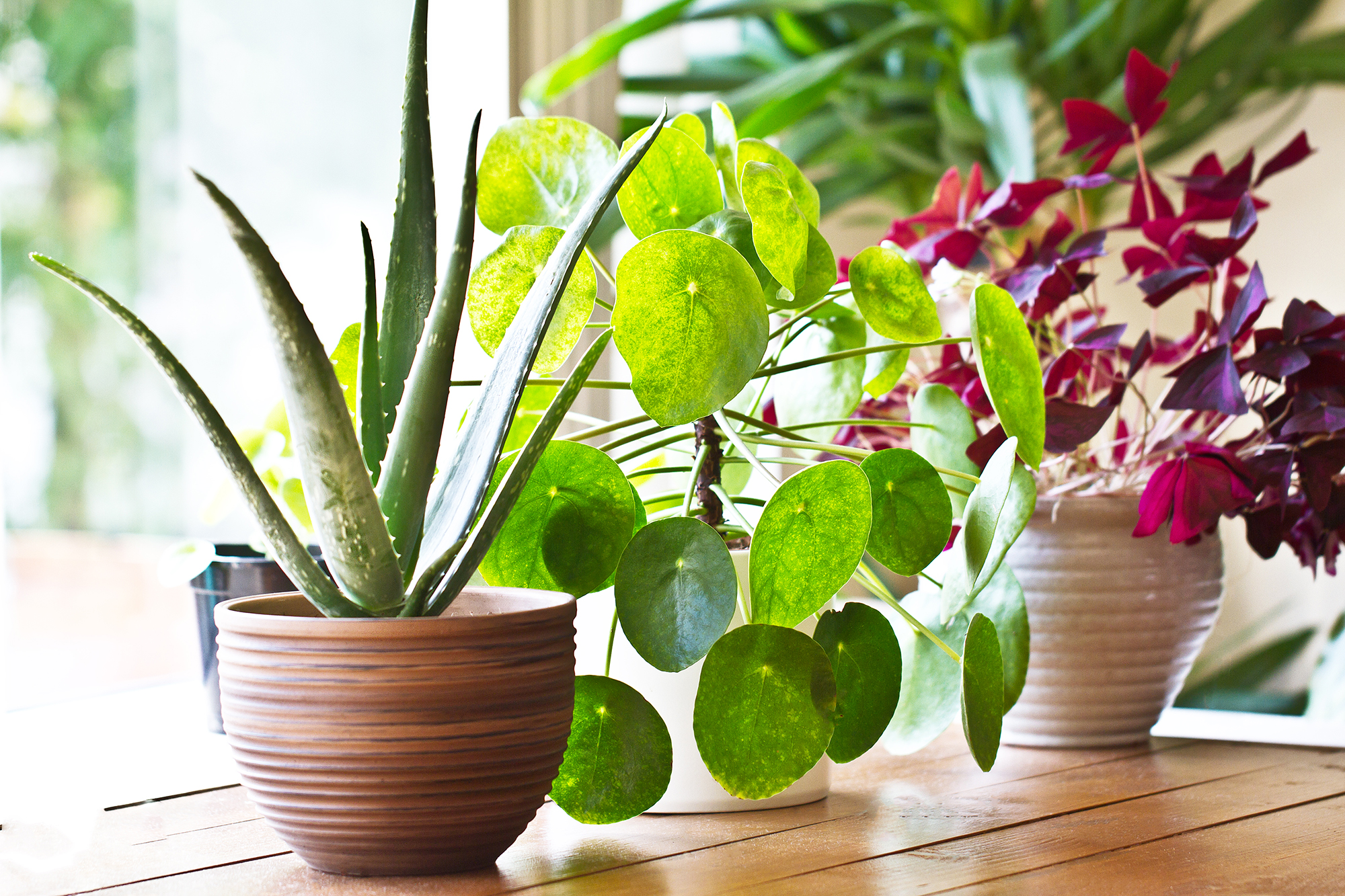

It's easy, with a little know-how, to bring air cleaning indoor plants into your home to keep you happy and healthy. With so many tempting plants on offer, making decisions can be tricky. But did you realize that some possess extra air purifying qualities? Knowing which ones absorb harmful toxins can help narrow down your wish list as well as making your home more restful and inviting.
One well-known study regarding indoor plants and air quality was conducted by NASA in 1989. Scientists were studying natural ways to purify the air in enclosed spaces, such as space stations, and today this has led to further insight into how particular plants can benefit our homes.
Best air cleaning indoor plants
Together with expert tips, our guide will inform you of everything you need to know, including where to position and how to care for air purifying plants. Many of these options make great additions as kitchen plants due to their air purifying properties.
1. Bird’s nest fern

A true stylish beauty, these crinkly leaved ferns are great air cleaning indoor plants, purifying the air of formaldehyde, often found in new flooring and wall coverings. With glossy lime green fronds growing in rosettes, they make a striking statement on a shelf or bathroom windowsill as a bathroom plants, but will need up to 2ft (60cm) to splay out as they mature.
Coming from the forests of Asia and Australasia these plants grow in the tops of trees and are used to varying light conditions from bright and airy to semi shade. What they do need though is moisture, so a spot in a humid shower room or ensuite is definitely their happy place. Mist every other day, particularly if they live in a dryer room but only water if the top inch of soil is dry. Room temperatures between 65-75ºF (18-24ºC) are ideal, avoid places below 55ºF (13ºC).
2. Areca palm – or bamboo palm, butterfly palm

Elegance personified, these are the graceful arcing palms that adorned Art Deco hotel foyers, tea rooms and danced halls. Native to Madagascar, they have distinctive smooth tipped branches and naturally cast a beautiful, dappled light. Thanks to these broad leaves, this plant – along with many other types of palm – excels at removing mold spores and ammonia (often found in household cleaning products) from the air, making it perfect for bath and shower rooms.
‘This house plant likes bright light that is filtered,’ says Mark Lawlor of Happy Houseplants. ‘This is because too much sun can lead to scorching the leaves. Best practice is to place the Dypsis Lutescens near a south or west-facing window with plenty of bright, indirect sunlight.’ Thriving at temperatures around 65-75°F (18-24°C) make sure the palm is clear of any drafts or radiators which can cause stress.
Design expertise in your inbox – from inspiring decorating ideas and beautiful celebrity homes to practical gardening advice and shopping round-ups.
A little fussy when it comes to watering, palms tend to prefer distilled or rainwater – as the fluoride in mains tap water can cause the leaves to crisp and turn brown. Water the soil regularly but ensure that it is allowed to dry out in between. Also ensure that there is good drainage as these tropical plants are prone to root rot if left standing in water.
3. Spider plant – or Hen and Chickens, ribbon plant

A classic air cleaning indoor plant, the spider plant's benefits are numerous so it’s hard to imagine any home not having one of these striped leaved beauties tucked away somewhere. But more than just an easy-to-grow favorite, these plants are formidable at removing formaldehyde, toluene and xylene all chemicals found in many synthetic fabrics, paints and glues. They have also been proved to lower carbon monoxide levels too.
Favoring temperatures between 55 and 80°F (13–27°C), Spider plants are one of the easiest and most tolerant indoor plants you can grow, even coping with artificial light, just keep them away from strong, direct sunlight which will crisp the leaves.
Water regularly during the spring and summer growing period and occasionally through fall and winter. Plant up in pots and place on a high shelf or windowsill or display in hanging planters. Unlike many other indoor plants, they are also non-toxic for pets too.
4. Dragon plant - Dracaena
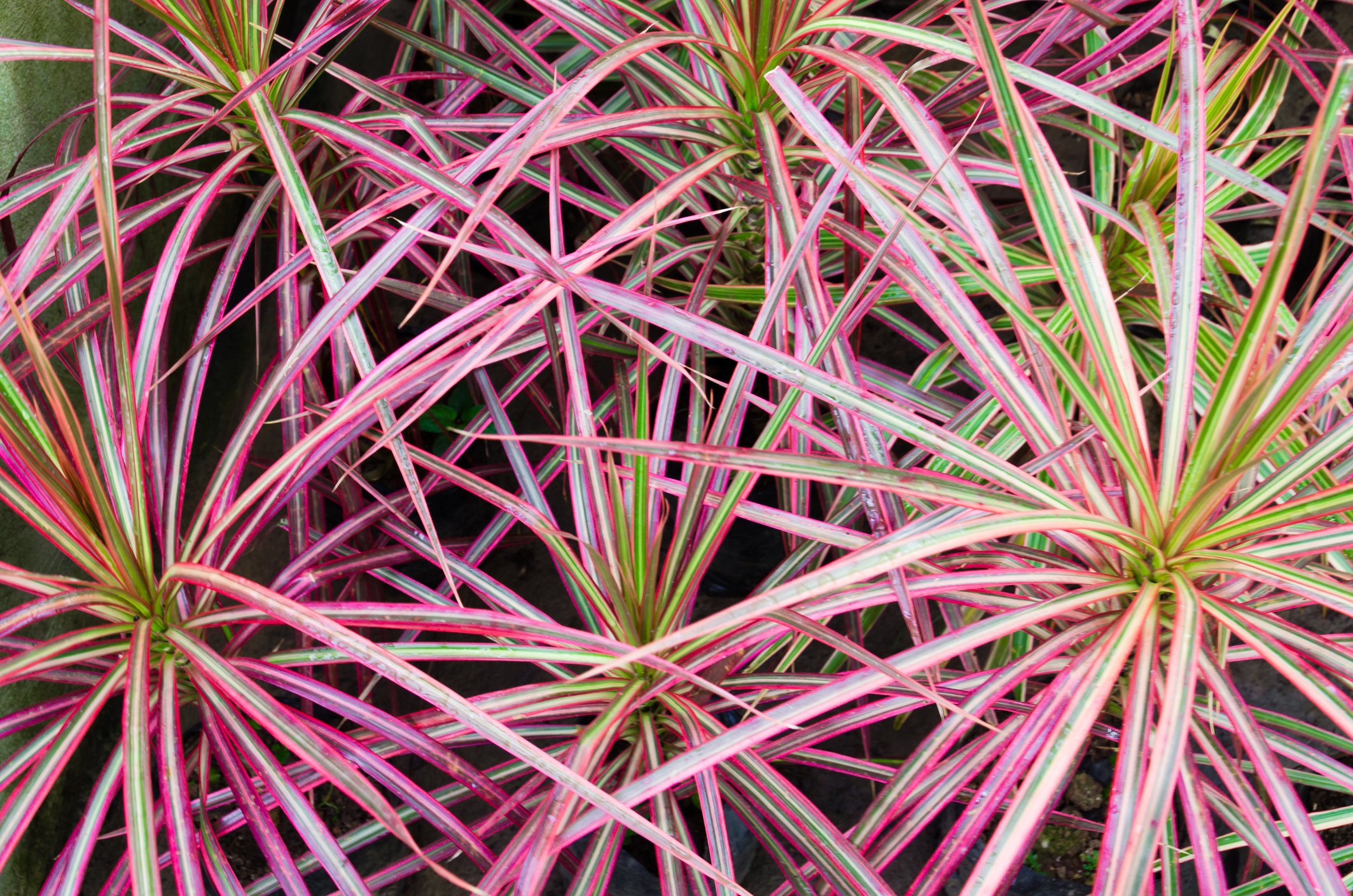
One of the most effective plants for absorbing trichloroethylene – a major VOC – the dragon plant is also extremely handsome and perfect for making a lush and bold leafy statement. Perhaps one of the easiest indoor plants to grow, it can live for decades if well cared for.
Preferring semi-shade, these well-natured plants come in all shapes and sizes, and colours. From tall glossy green corn stalk plants to the Dracaena bi-color with its pink and white edged green leaves, they make striking and individual statement plants. With some varieties growing up to 10ft high, these plants prefer semi shade and are happy in temperatures of 60-70°F (16-24°C). This plant can survive lower temperatures (as low as 50°F or 10°C), but the leaves will suffer, usually turning yellow.
Dragon plants don’t tend to cope well with mains tap water due to the added chemicals, so use a distilled or harvested rainwater instead. Aim to keep the soil moist but not waterlogged and mist frequently with warm water.
5. English ivy
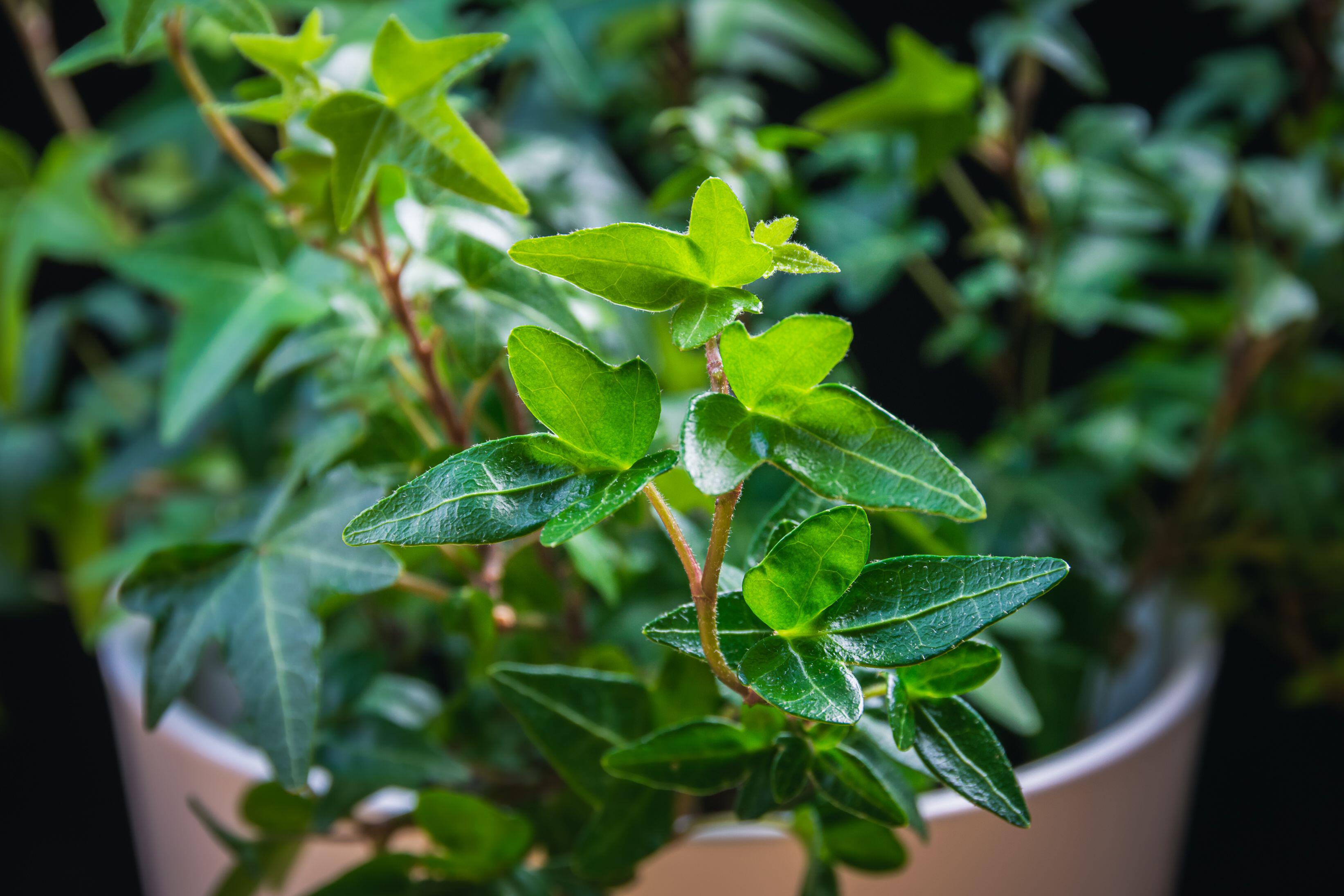
Quick to grow and happy in most spots around the house, regardless of temperature or light conditions, English or European ivy is a real winner. It’s attractive, trailing stems of distinctive evergreen leaves are particularly effective at reducing airborne toxic chemicals.
The team at The Joy of Plants say: ‘Ivy removes trichloroethylene and benzene from the air and is especially good at removing formaldehyde; a substance that occurs in almost all indoor environments (such as chipboard, furniture and textiles).’
Its foliage has also been shown to help reduce mold, making it a useful plant for damp spaces such as an ensuite or bathroom.
Performing best in direct sunlight, well drained soil and with plenty of water it will make a stunning statement draping down from a shelf or hanging planter. Keep at a steady temperature of between 52-71°F (11-22°C) for healthy growth.
Ivy is also excellent as a bedroom plant, either trailing over a bedside table, or hanging from a hanger placed above the bed.
6. Money plant – Pilea peperomioides
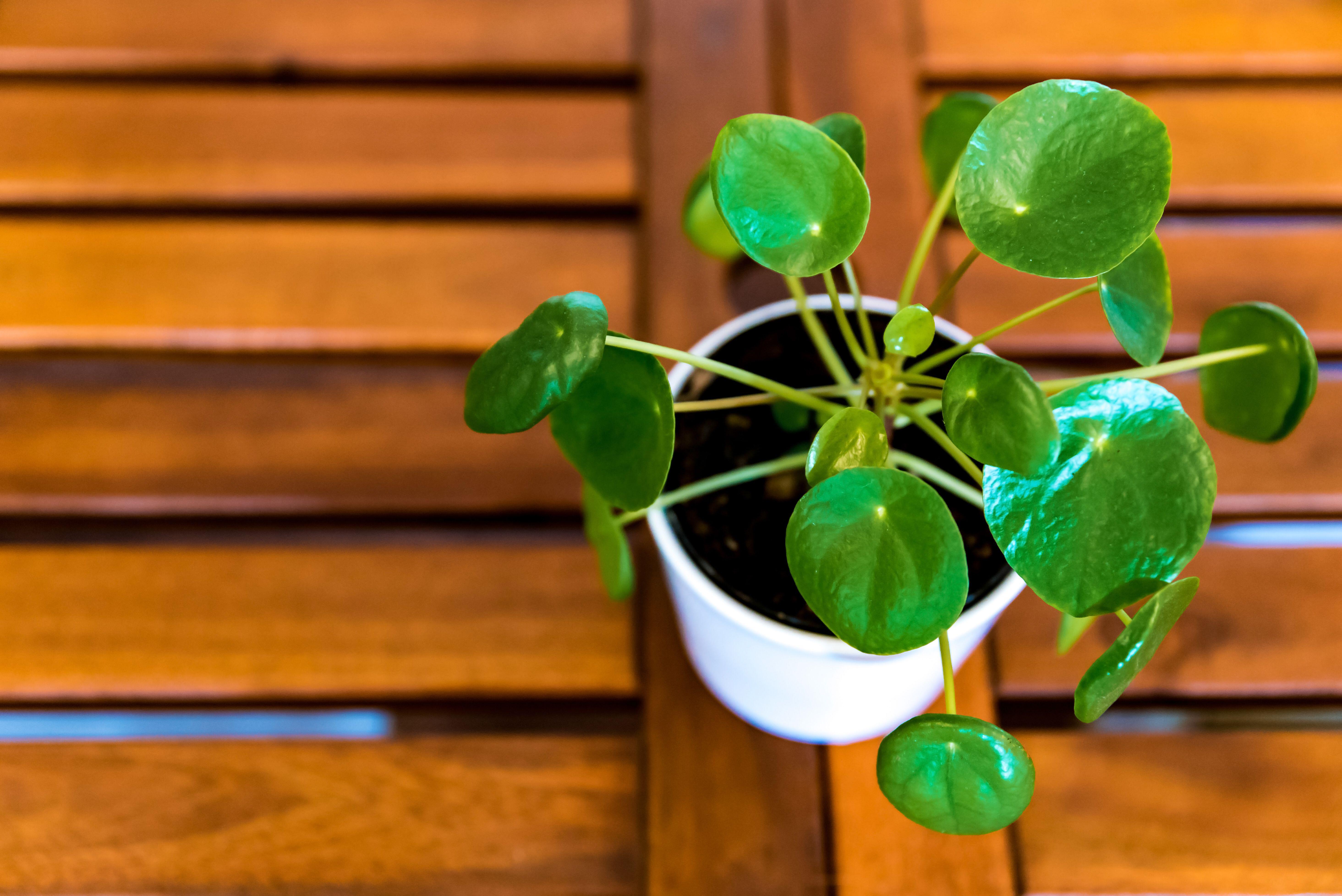
With its flat, green circular leaves that can grow as big as 5in (15cm) across, the Chinese money plant is instantly recognizable. One of the most effective indoor plants for air purification they are particularly effective at reducing levels of harmful chemicals found in carpets, paints, glues and manmade fabrics.
A member of the stinging nettle family, this unusual plant can grow up to 16 inches (40 cm) high and loves a light spot, away from strong sunlight. Water when the soil is dry to the touch and feed monthly with a liquid feed during spring and summer.
Although largely unfussy, these plants don’t like temperatures that dip below 50°F (10°C) so aim to keep them between a comfortable 55-86°F (13-30°C). Be sure to turn a Chinese money plant regularly to maintain a balanced and attractive shape and don’t worry if it sheds its lower leaves, as this is entirely normal.
7. Weeping fig – Ficus

Slow growing with a mass of glossy leaves, these indoor trees are not only ideal for adding impact and interest to an empty corner but are brilliant air cleaning indoor plants, too. Filtering harmful formaldehyde, xylene and toluene and replacing them with oxygen, they are a great addition to busy kitchens, living areas and home offices.
Reaching from 3ft to 10ft (90-304cm) they like a bright spot with plenty of space to spread their arching branches. They are a little diva-ish though as they dislike being moved around or disturbed, dropping their leaves in protest, so carefully assess the perfect spot before homing your plant. They do tend to grow towards the light, so turn regularly to maintain a balanced, even shape.
A steady room temperature of around 60°F (16°C) is perfect for these plants but do avoid cold drafts and areas that dip below 55°F (13°C) as this will lead to leaf drop. Over watering is the main problem with weeping figs as they hate sitting in puddles. Only water when the top inch of the compost is bone dry and use tepid water to avoid shocking the plant. Feed fortnightly with a liquid feed during spring and summer and, for mature plants, top up compost levels annually. It’s worth knowing that these plants can be toxic to some pets, so maybe worth avoiding if you have curious pets.
8. Snake plant or Mother in Law’s Tongue
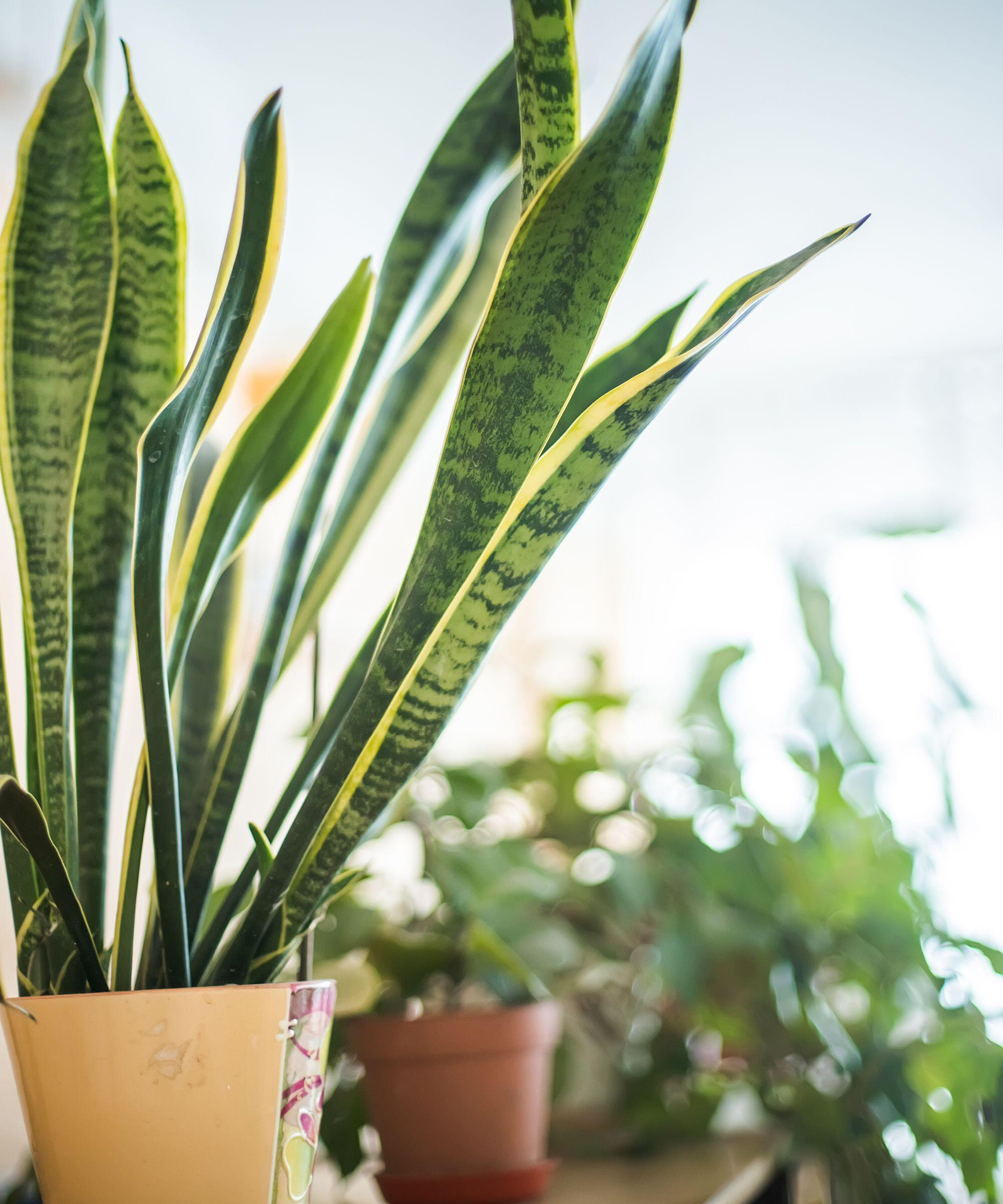
It may not appear to be the most restful plant to have in a bedroom, but sansevieria is one of a few plants that continues produce oxygen in near dark conditions. It’s also very effective at eliminating airborne formaldehyde, nitrogen oxide, benzene, xylene and trichloroethylene, all chemicals that can often be found in synthetic carpets, glues, paint and other interior fittings.
With its twisting sword-like leaves and stripy markings, it makes this plant the perfect showstopper for a side table, windowsill or neat corner. Tough and extremely drought tolerant, they are relatively slow growing, and can cope with low light conditions but will grow faster in brighter positions.
Native to west Africa these plants can stay outside in HDSA zones 9-12. They will die though if left in temperatures below 50°F or exposed to frost. Water once a week during spring and summer but do drop to once a month in fall and winter when the plant is dormant.
There are plenty of different varieties of snake plant to choose from, including dwarf varieties such as Sansevieria fischeri at 16 inches (40cm) up to 3-4ft (91-121cm) for Masoniana and trifasciata types.
The experts at Patch Plants suggest, ‘Every now and again – just whenever you remember – give her leaves a light wipe to keep her pores free of dust.’
9. Aloe vera
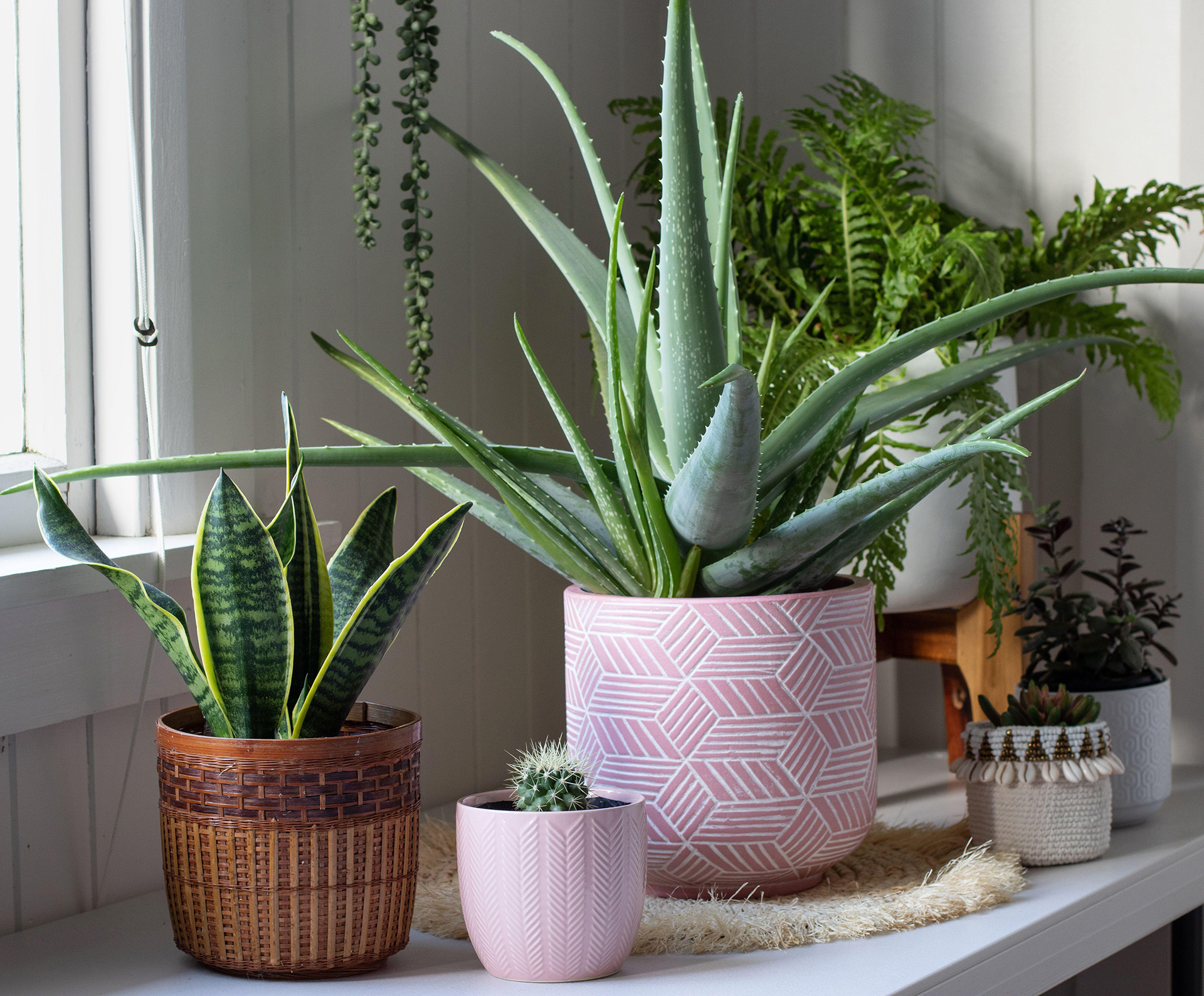
A superstar amongst indoor plants, aloe vera is not only striking to look at and blessed with healing properties, but it can help purify the air too. A great absorber of VOCs often found in newly laid flooring, paint and glue, it takes in carbon dioxide and produces oxygen at night making it ideal for bedrooms in particular.
The fleshly leaves store water so they can happily cope with less than regular watering, but what they do need is constant warmth. Preferring room temperatures of 50-85°F, these natives of the Arabian Peninsula must be kept clear of cold drafts and frost. They can grow outside in HDSA zones of 8-11, but in exposed or marginal areas it may be better to plant in a pot and move inside and out as the temperatures dictate.
Pot up with succulent and cacti compost and feed with a specialist liquid feed weekly during spring and summer.
10. Peace lily
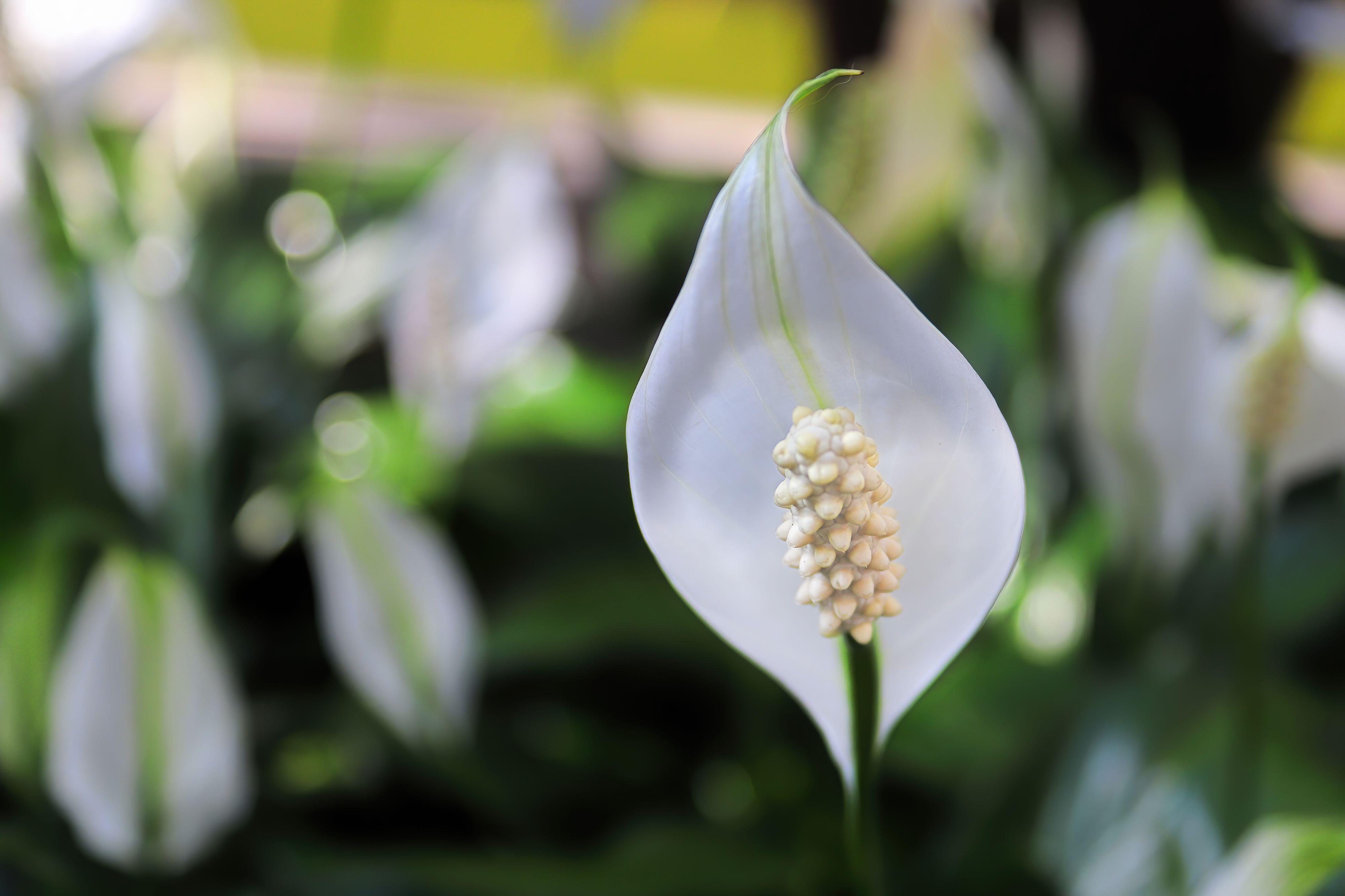
With its glossy tear shaped leaves and pure white flowers, the peace lily is one of the most popular house plants, and is a great air cleaning indoor plant. Effortlessly chic, they radiate tranquillity and simplicity, but also break down and neutralize toxic household gases like benzene, formaldehyde, and carbon monoxide.
This plant reaches around 30in high (75cm) and will thrive in temperatures 64-75°F (18-24°C) but can cope with lows of 53°F (12°C). Loving a humid and bright spot – but away from direct light which can scorch the deep green leaves – these plants are particularly well suited to a steamy kitchen, bathroom or shower room.
Preferring moist soil, these plants will tell you when they are thirsty as the leaves will droop. Pop it next to the shower for the occasional boost or mist with a water spray. Feed with a liquid feed fortnightly during spring and summer.
What is the best air purifying indoor plant?
Chrysanthemums (below) are the most effective plant at cleansing the air. Eliminating common VOCs such as formaldehyde, xylene, benzene it can also absorb ammonia which is present in many household cleaners and floor sealers. Unusually it’s the flowers that extract the chemicals from the air, so you may need to replace regularly or rotate a few plants while old blooms fade, and new buds emerge.
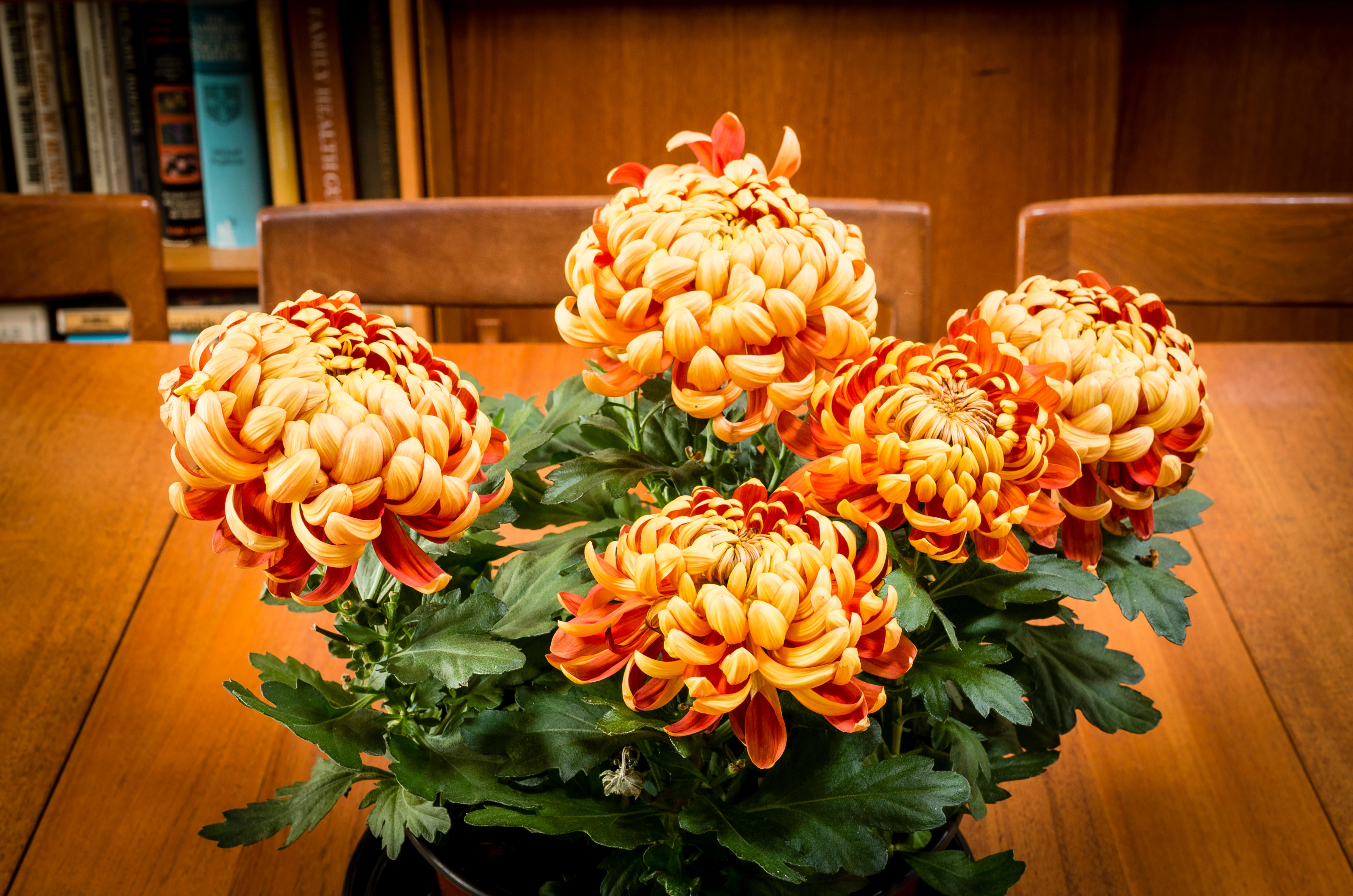
How many plants does it take to purify the air in a room?
According to the 1989 Nasa study on Interior Landscape plants for indoor air pollution abatement, author B.C. Wolverton recommends having at least two ‘good sized’ plants per 100 sq ft (9.2 sqm) of indoor space. Suggested plants include Golden pothos (below), Boston Fern and Weeping Fig.

Where to buy air plants?
You can buy air cleaning indoor plants at your local nursery; ask for guidance if you need help. Otherwise, shop online for the best places to buy plants. These include:
- Amazon air plants
- Bloomscape air plants
- Burpee
- Etsy air plants
- Home Depot's Garden Center
- Lowe's air plants
- The Sill air plants
- Walmart air plants
You can buy indoor low light plants at your local nursery; ask for guidance if you need help. Otherwise, shop online for the best places to buy plants. These include: Lowes Garden Center, Home Depot's Garden Center and Burpee for the best buys.
You can buy indoor low light plants at your local nursery; ask for guidance if you need help. Otherwise, shop online for the best places to buy plants. These include: Lowes Garden Center, Home Depot's Garden Center and Burpee for the best buys.

Journalist Jill Morgan has spent over 20 years writing and editing gardening, interior and property features. Titles she has worked on include The English Home, House Beautiful, Ideal Home, Houzz and Modern Gardens and she writes regularly for H&G as a Contributing Editor. Whilst she is a dab hand at renovation projects and DIY, she is happiest when out digging in the garden or planning a new border.